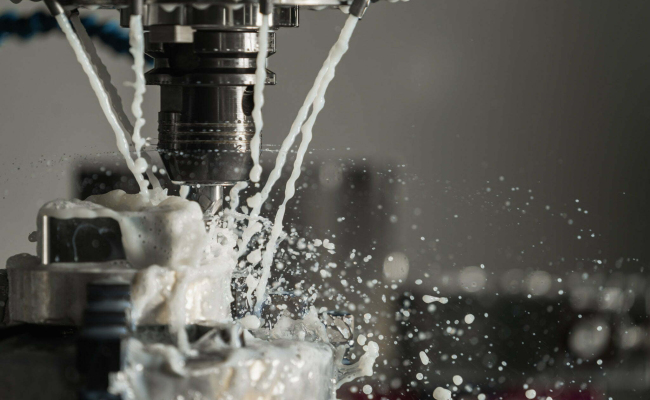CNC milling is a process used in metalworking that combines computer numerical control (CNC) with milling tools. It is used to create custom parts and components with precise dimensions and shapes. With CNC milling, digitalized project from a computer is used to control the machines, allowing for greater accuracy and precision than the traditional manual milling process. CNC milling machines are used in a wide array of industries and applications, including automotive, electronics, and industrial manufacturing. The machines can be used to produce a variety of parts, such as gears, shafts, pins, couplers, molds, and dies. CNC milling machines can also be used to machine complex shapes and contours with accuracy.
The process of CNC milling in metalworking involves the use of a CNC machine and a cutting tool, such as a drill bit or end mill. The machine is programmed with instructions that tell it how to move the cutting tool to create the desired shape or form. The machine then follows the instructions to create the part or component. The process can be repeated as many times as needed to create multiple components. CNC milling is often used for high-volume production runs, as it is efficient and cost-effective.
CNC milling has several advantages over traditional methods of machining metal, including, but not limited to, increased precision, faster production speeds, and reduced costs:


Overall, while CNC milling in metalworking has many advantages, it also has some drawbacks. The high initial investment and complicated programming can make it difficult to use, and it requires a certain level of skill and expertise to operate correctly.
CNC milling processes include face milling, angular milling, form milling, end milling, slot milling, side milling, gang milling, drilling, and reaming. The type of operation will determine the type of cutting tool used and the speed and feed settings of the machine.
Face milling is a type of CNC milling operation in which the cutting tool is moved along the surface of the workpiece, creating a flat surface.
Form milling is a type of CNC milling operation in which the cutting tool is moved along the surface of the workpiece to create a shape, such as a hole or slot.
Angular milling is a type of CNC milling operation in which the cutting tool is moved along the surface of the workpiece at an angle, creating angled surfaces.
End milling is a type of CNC milling operation in which the cutting tool is moved along the surface of the workpiece to create a flat surface.
Slot milling is a type of CNC milling operation in which the cutting tool is moved along the surface of the workpiece to create a slot.
Reaming is a type of CNC milling operation in which the cutting tool is moved along the surface of the workpiece to create a smooth, rounded hole.
The process begins with a piece of raw material, typically a block of metal. The CNC milling machine then moves the cutting tool based on the programmed instructions in order to cut out the desired shape. The cutting tool is moved in a series of steps, and the end result is a part with the exact dimensions and shape specified in the program.
In order to create the tool path and program the machine, a CAD (computer-aided design) software is used. This software allows the user to create the tool path and program that specifies the desired shape and dimensions of the part. The CNC milling machine then follows the instructions in the program to cut out the part.
CNC milling can be used to produce a wide range of parts, including complex shapes and intricate details. It can be used for cutting slots, grooves, pockets, contours, and other shapes. It is also used for drilling, tapping, and reaming. It can be used for producing parts with a high degree of accuracy and precision, such as gears, cams, and splines. Additionally, CNC milling can be used to produce complex 3D shapes.
The cost of CNC milling depends on the size and complexity of the parts being produced. CNC milling is a cost-effective process, offering precise results, faster production, and reduced material waste. If you need help with CNC milling, be sure to contact our professionals for assistance.
We make parts from materials such as: steel, quality steel, stainless steel, aluminium, copper, brass, plastics, and other materials according to customer needs.
CNC turning and CNC milling are both processes that use computer-programmed commands to control the rotation of a cutting tool. The main difference between the two processes is that CNC turning is used to create cylindrical parts and components, while CNC milling is used to create flat parts and components.
Yes, CNC milling can be used to produce a wide variety of parts and components. If you have a part or component that needs to be produced, contact our specialists to discuss your project and determine if CNC milling is the right process for your needs.
We deal with the completion of one-time orders as well as orders with a serial number of pieces.


At SKAMAR, we have a wide park of metalworking machines necessary to create metal parts and components with required precision.
We are looking forward to working with you soon!
Skamar sp.j EU VAT: PL 7641006460
Copyright © 2022. All rights reserved.